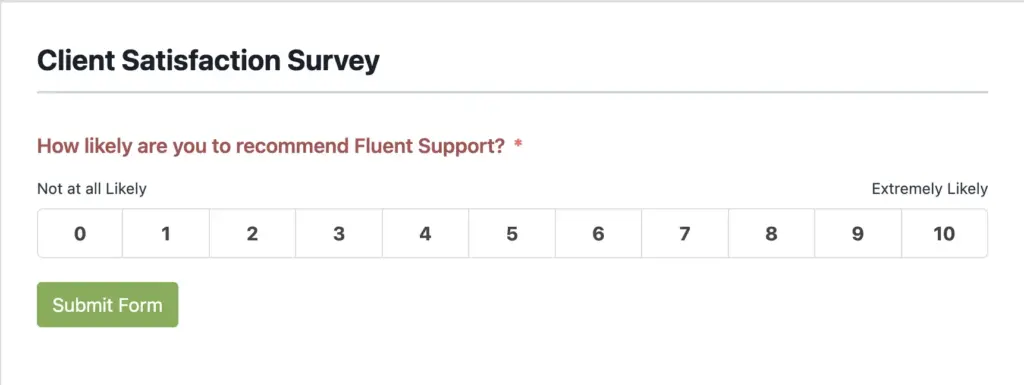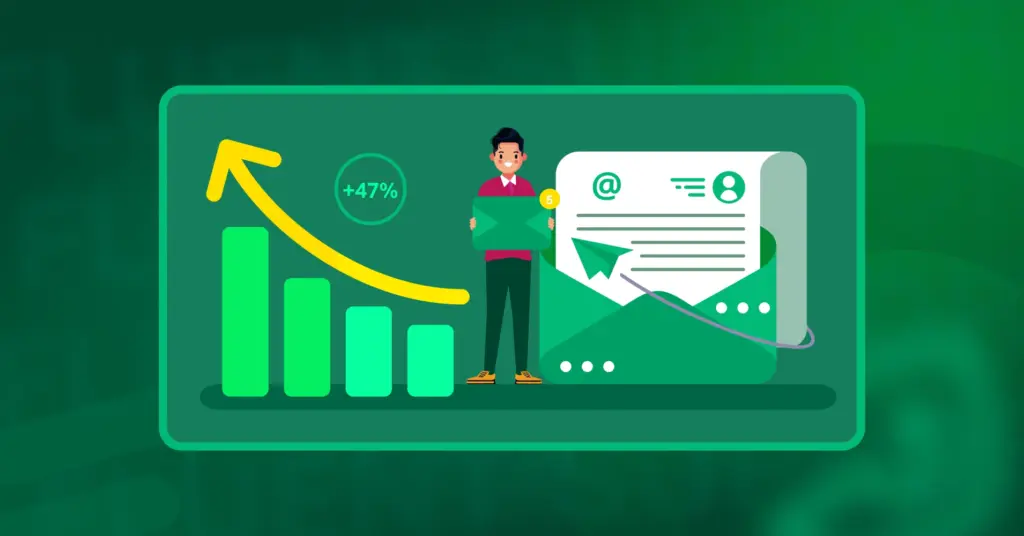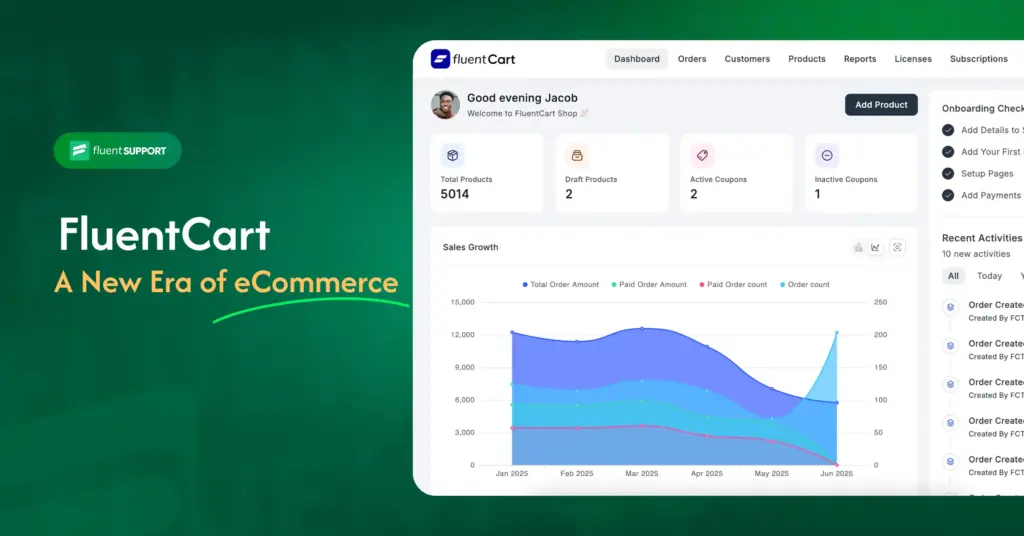
Customer Satisfaction Explained: What it Does and How to Measure it?
In 2025, customer satisfaction is the only reliable way to keep your customers coming back. 81% of marketers believe customer satisfaction to be the ultimate factor for retaining customers.
Keeping customers satisfied is especially important now because 50% of customers are willing to switch after a single bad service experience.
Yes, that’s right, 50%. A churn rate of this proportion can bring the largest of companies to their knees. Whether you fall into the SME or Fortune 500 group, customer satisfaction is something you can’t compromise.
Not only does it help retain existing customers, but it also offers a chance to build loyalty which is the gold standard of marketing success. Going the extra mile to satisfy customers can make the difference between you and your competitors.
In this article, we’ll be looking at what is customer satisfaction, why it’s important, and how you can achieve it.
Customer satisfaction definition
In broad terms, customer satisfaction is the state of a customer where they are pleased with their decision to do business with you.
In other words, customer satisfaction is the degree of success your business has at meeting customer expectations. Based on this, you might think customer satisfaction is easily obtainable with an awesome product, right?
Unsurprisingly, the rabbit hole goes way deeper.
A product can be very good at its job and still fail to satisfy the target customers. This can be due to not meeting customers’ specific needs, misleading resources, lacking the knowledge of practical use cases, etc.
From the definition of customer satisfaction, it seems a little subjective, right?
Well, it kind of is. However, the methods to reliably satisfy customers are far more objective.
Customer satisfaction importance
Measuring customer satisfaction has always been difficult due to its subjective nature. Hence it takes a lot of thought and creativity to quantify the level of satisfaction of individual customers. Before we get to how that works, here are 3 good reasons why customer satisfaction is important.
Customer satisfaction increases retention
Satisfied customers are usually the last ones to leave you hanging. Customers have a tendency to choose familiarity over the hassle of moving to a new product/ecosystem. So if you’re product is as good as your competitors, what will be the defining factor?
Service and ease of use, of course!
The better service you provide post-sales, the easier it is to make these customers stick with you. This is also known as customer retention, and it’s by far the most crucial reason to invest in customer satisfaction.
Mostly because higher retention rates mean you have less churn. Having less churn means you can ease off the gas for new customer acquisition. So when you invest in customer satisfaction you’re actually reducing pressure on your customer acquisition process.
Customer satisfaction promotes loyalty
When you’ve retained a customer long enough, they evolve into this new Pokemon called “loyalists”.
Jokes aside, customers tend to develop a genuine bond with a brand that they’ve been with for a significant amount of time.
That being said, there is an element of trust in it for this to work. Customers buying from you aren’t always going to become loyal advocates. It’s about developing a sense of uncompromised reliability. When you go the extra mile for your customers, it converts into satisfaction.
Only when you’ve been there for your customer through uncertainty and satisfied them will you develop trust. Trust is what turns customers into advocates. All of this starts with customer satisfaction and that is what you should aim for in the long run.
Customer satisfaction helps you to offer more value
When you focus your efforts on satisfying customers, it translates into the whole philosophy of your business. By measuring customer satisfaction, you can determine the gaps in your efforts.
If your customers say your product is missing key features, it’s probably more true than your development team will like to admit. In that case, it’s crucial to revisit the drawing board and rethink the USP of your product.
Similarly, if a customer finds your support system dated or hard to use, it’s important to make changes to it. The same is true for customers not finding adequate resources about your product.
As a whole, customer satisfaction paints a picture of the likelihood of leaving your business and what might cause it. If you ask us, that’s enough to evaluate your efforts and find gaps to improve.
How to measure customer satisfaction
As we said, measuring satisfaction is a very subjective matter. So to make it quantifiable, businesses have come up with the comprehensive metrics that we’re going to talk about.
CSAT
CSAT is basically a survey to assess the satisfaction level. This usually comprises a numerical representation of the degree of satisfaction a customer gets from your business. While the language can vary, the end result is usually a rating of how good or bad customer service is.
Aside from the rating of your business, you can add data points on individual aspects of your product/service. For instance, how easy it is to make a purchase, get customer support, use a particular feature, etc.

NPS
NPS or Net promoter score is one of the oldest metrics to measure satisfaction. This survey usually determines how likely is a customer to recommend your business to others. Companies have diversified a lot on this survey, which is why NPS has become a standard practice to determine satisfaction rates.
NPS allows you to dissect your customer pool into promoters, detractors, and neutrals. That is, promoters are the ones who will recommend you to friends and family, while detractors will advise against it. Having a high promoter ratio is the ideal outcome.
In contrast, having a large neutral portion means your marketing team is doing well, but your service and support team isn’t achieving the gold standard. NPS data helps you find those gaps and improve accordingly.

CES
Lastly, we have a customer effort score or CES. This measures the degree of ease in interacting with your business. Consider a business where customers have to file a complex form and wait for approval before buying a product. It may work for limited edition collectibles or expensive schools. It definitely will not work for consumer goods and software.
As a business, making things easy for your customer is crucial. So in order to evaluate the satisfaction a customer is getting with your brand, CES is a good tell.
CES surveys include questions such as,
- Rate the support interaction you had with us?
- Did you find the solution in our resources?
- Was the submission guideline helpful?
These questions focus on the effort a customer made to do business with you. A low score CES score means your business is very friendly and cooperative with customers, which means more satisfied customers.
On the other hand, a high CES means doing business with you is tough, which means it’s going to be very difficult to satisfy customers.
Find, store and access customer feedbacks
all in one system.
How to create survey forms?
You’re probably wondering how to build survey forms for your customer satisfaction surveys. Well, we’ve used Fluent Forms for the purpose of this blog. It’s one of the most robust form builders available on WordPress. Even if you don’t have Fluent Forms Pro installed, you can still create basic forms to get preliminary data using the free version.
The best part is you can store and reuse form templates, so creating a survey form is just a few clicks away. Make sure to check out this awesome form builder for all your customer survey needs.
How to satisfy customers?
Now that you know how to measure satisfaction among customers we can get to how you can improve these satisfaction scores.
Meet expectations
As a business, you need to be aware of the expectations a customer might have from you. That’s to say what the current trend is, what your competitors have set as standard, what your product is going to be actually used for, etc.
Figuring out what your customers expect from you is half the story. Afterward, you have to bring your product vision in line with what your customers expect. We know it’s easier said than done, but that’s the cost of satisfying customers in this era.
Deliver on promises
People hate being misled. So if your marketing team is making promises your product or service team can’t keep, it’s going to cause a lot of losses. Make sure your marketing strategy is in line with what your product is made to deliver. For instance, if you say you have the cheapest essay writers, then you have to live up to it. Otherwise, you’ll end up looking like a scam.
Only when you deliver on your promises with minimum hassle will you satisfy a customer. That satisfaction will be of use when you keep doing this consistently. There are no momentary lapses in business. Customers will always remember the worst experience, and being misled or lied to is something they will never let you live down.
Go the extra mile
Do you want to know the other thing customers remember? Going out of your way to offer them a good experience. On this note, I’ll share a personal story to make the point.
On my last vacation, I stayed at three places at varying price points. While all were standard services at their respective price range, only one of them stood out from the rest of my experience.
None of the places had a drug store nearby. I had to ask for directions at each place. Two of them just said there is no store nearby. Only after prying did they tell me where the nearest store was and how to get there.
The 3rd place I stayed in won my heart. They asked what I needed, and told me to wait a minute. Then they called up one of their staff who was already out, to bring in my meds. I paid for the medication and the service they offered was free of charge.
It’s no surprise which one of them I gave a 5-star rating after leaving. That’s enough said for going the extra mile. If you do it, it will show and pay off.
Develop a mindset
Satisfaction isn’t a one-time thing. It’s about always having the mindset to satisfy. That doesn’t come easily. You need to train your service and support team to have a mindset to satisfy. Customer support and service teams should be prepared to find and utilize the opportunities. To develop this it’s essential to train them in this regard.
Wrapping up
Customer satisfaction is the most reliable way of retaining paying customers and building a base of new ones. Now that you’ve got a clear idea of how your business decisions can affect satisfaction scores, it’s time for you to develop your own unique approach.
Measuring satisfaction is most important, so make sure to use the satisfaction metrics as often as possible. Emails are a great way to do this. For instance, you could send a follow-up email to check how the customers felt about their tickets.
There are a lot more ways to ensure customer satisfaction. However, by far the best way is to create a mindset that prioritizes customer satisfaction.
Until next time, happy serving!
Start off with a powerful ticketing system that delivers smooth collaboration right out of the box.












Leave a Reply